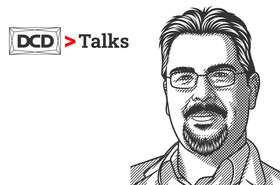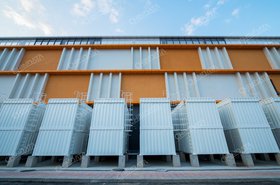For most of their shared existence, data centers and telecoms networks were separate things with stark differences. Even the power they consumed was different, with data centers supporting AC equipment (such as computer servers, routers, and disk arrays in centralized centers) and telcos managing DC equipment in distributed locations.
From a data center perspective, besides a few pilot projects and the occasional specialty design, that AC/DC divide remains today. The story is more nuanced on the telco side, where AC-powered servers and IT systems are becoming increasingly necessary to support 4G and 5G applications.
Already, telecoms central offices are largely indistinguishable from data centers, and as 5G deployment accelerates, there is considerable overlap between telecoms sites and the edge of the typical IT network. As the technology becomes an enabler for even more consumer applications, the trend is likely to continue.
The introduction of the smartphone presaged this telco/IT convergence, as telecom networks suddenly had to evolve to enable handheld computing (and with it, shopping, entertainment, social networking, and so on) for billions of users around the world.
Every new generation of the network introduced new capabilities, and the newest – 5G – is bringing high-definition video, augmented and virtual reality, and artificial intelligence to the palm of every user’s hand, as well as to their cars, home digital assistants, tablets, and so many other platforms.
The industry has been integrating solar as a standard component in power solutions for years, while driving efficiency in rectifiers, generators, and associated equipment. Today’s most advanced DC power rectifiers are more efficient than their AC UPS counterparts.
Of course, energy efficiency wasn’t the only driver of those efforts. These hybrid energy systems are needed in remote locations where grid power is unavailable or unreliable, and their use for years was most common in those environments. Only recently have we seen on-grid hybrid energy solar systems being deployed as part of a true energy management strategy, although with those examples limited mostly to Europe in response to the rising cost of energy.
Still, telecoms networks are responsible for an estimated two-to-three percent of global energy use (compared to around one-to-two percent for data centers) before the anticipated 5G spike. This is an industry that has to know its way around energy efficient technologies and practices.
Start with the easy stuff
Whether it’s a telecoms access site or the edge of your IT network, there are some simple steps that can be taken to improve energy efficiency, reduce consumption, and cut costs. These may seem small on an individual site basis, but scaled across the network – sometimes hundreds or even thousands of sites – the results can be significant.
To enable these services, 5G networks require computing close to the consumer. Operators are adding and expanding network sites populated with IT equipment. The capital costs associated with these activities are significant, but the enduring sticker shock with 5G is the operational expense: specifically, the cost of powering and backing up this equipment. Energy use is already responsible for more than 92 percent of telecoms network operating costs, and 5G is projected to double or even triple the industry’s consumption over the next decade. And, of course, the increased energy use also increases the associated carbon footprint.
It’s no surprise that telecom operators are exploring all options to help reduce energy consumption, costs, and carbon emissions. We recently released a white paper on the topic. Considering the overlap between the telecoms access space in the era of 5G and the proliferation of the Edge data center, it seems data center operators with Edge deployments could find a few of those telco-focused recommendations relevant.
Telecom’s head start
Before you scoff at the suggestion that telcos have any insight to offer to the data center community, understand this: telecoms operators were aggressive in their efficiency efforts even when the modern data center was in its infancy.
The most obvious and commonly adopted strategy is simply transitioning to high-efficiency equipment at every Edge site. This starts with servers and UPS systems, the latter of which are available in newer, high-efficiency models that can improve energy efficiency by between two and three percent.
To fully actualize the 95 percent efficiency these systems promise, users must also optimize the size of the load. It’s common practice to maintain a load at half or less of UPS capacity, but the further from 100 percent capacity, the lower the real efficiency of the UPS. Most users aren’t going to match the load to the full capacity of the UPS, but it’s safe and far more efficient to maintain a load greater than 50 percent.
Many modern UPS systems, including smaller systems tailored to most Edge sites, offer more advanced energy management features. The most common – yet still woefully under-utilized – is ECO mode. This feature can boost efficiency by up to 99 percent by powering the load through the bypass line with the inverter powered down until needed.
Many data center operators are reluctant to trust the most critical operations of their networks to ECO mode, but even cautious organizations should evaluate the criticality of functions hosted at the Edge and make ECO mode decisions accordingly.
In truth, the intelligence built into today’s UPS systems and their energy management features – including ECO Mode – makes using it in all but the most mission-critical of applications a viable, if not preferred, option.
In short, every provisioning decision at every Edge site should be made with energy efficiency at top of mind.
Getting creative
Other efficiency-oriented strategies are less common, although in many cases circumstances are shifting to encourage more aggressive, creative approaches.
Although many organizations are wisely embracing equipment and design standardization across their Edge sites (an efficient practice, by the way), universal standardization is impossible. As you move from state to state, country to country, or climate to climate, external factors change. Regulations change. Grid reliability changes. Temperature and humidity change. Energy and carbon management strategies must be linked to the specifics of the site. Consider these examples:
- Solar power: Solar power is the most common and scalable alternative energy option and a relatively common choice as part of hybrid energy systems at telecom sites in much of Africa, South America, the Middle East, parts of Asia, and increasingly in Europe. It’s not as commonly used for IT Edge deployments (or in the United States generally), but the price of solar has dropped and some users may see an opportunity to supplement their power needs at the Edge.
When evaluating solar power as an option, however, Edge operators must consider a variety of factors in addition to available sunlight, including cost of electricity from the utility compared to the cost of solar; the reliability, energy security, and resiliency of the grid; and whether the site footprint can accommodate solar panels. Solar technologies have matured and reached a price point that warrants consideration, but that does not mean solar is the right choice for all sites.
- Lithium-ion batteries: Li-ion batteries can pack the same amount of power as traditional valve-regulated lead-acid (VRLA) batteries in a smaller, lighter footprint – perfect for Edge data center sites. They last longer than VRLA, and with the mandatory battery management system, operators can monitor and manage them remotely, and potentially enable peak shaving and sharing when the opportunities are present. All of this contributes to less frequent replacements and reduced truck rolls and costs, plus reduced carbon dioxide (CO2) emissions associated with those activities. As recycling options increase, the case for lithium-ion as a responsible environmental choice increases.
The bottom line
Rising energy demands and costs, coupled with the accelerating climate crisis, demand attention across the network. Many hyperscalers, such as Google and Microsoft, have taken the lead in setting ambitious energy and emissions goals, but in an increasingly bifurcated data center ecosystem, the edge of the network matters. The distributed nature of these networks may be relatively new to the data center industry, but it is not new to telecom. With that in mind, looking to telcos for best practices in managing the energy consumption at distributed sites makes sense.
The steps outlined here will contribute to important energy management efforts, and the advances our industry is enabling will contribute to a holistic, global effort to combat climate change.
More...
-

Energy at the retail Edge
If retail becomes more digitized, will that break the energy bank? Maybe not, if stores share energy with the grid, and Edge devices learn to power themselves
-

DCD>Talks Liquid Cooling with Drew Tuholski, Vertiv
Liquid cooling has never been hotter (excuse the pun). We chatted with Drew Tuholski, Offering Manager at Vertiv about everything liquid cooling
-

Chindata claims waterless 'X-Cooling' technology
Update: it's just rebadged Vertiv chillers



